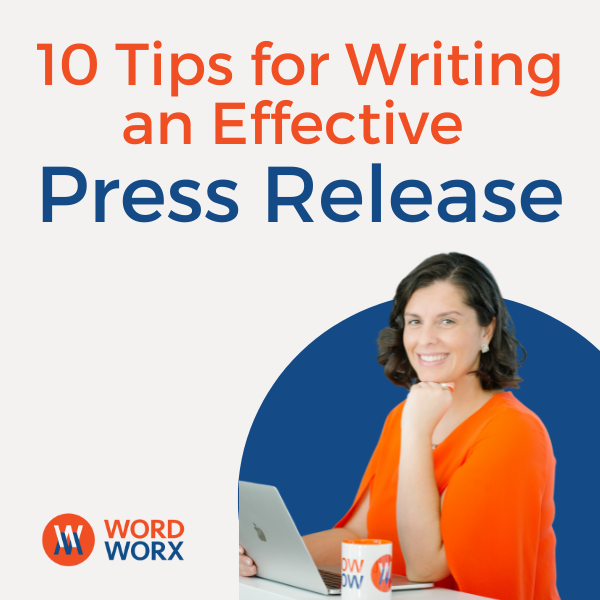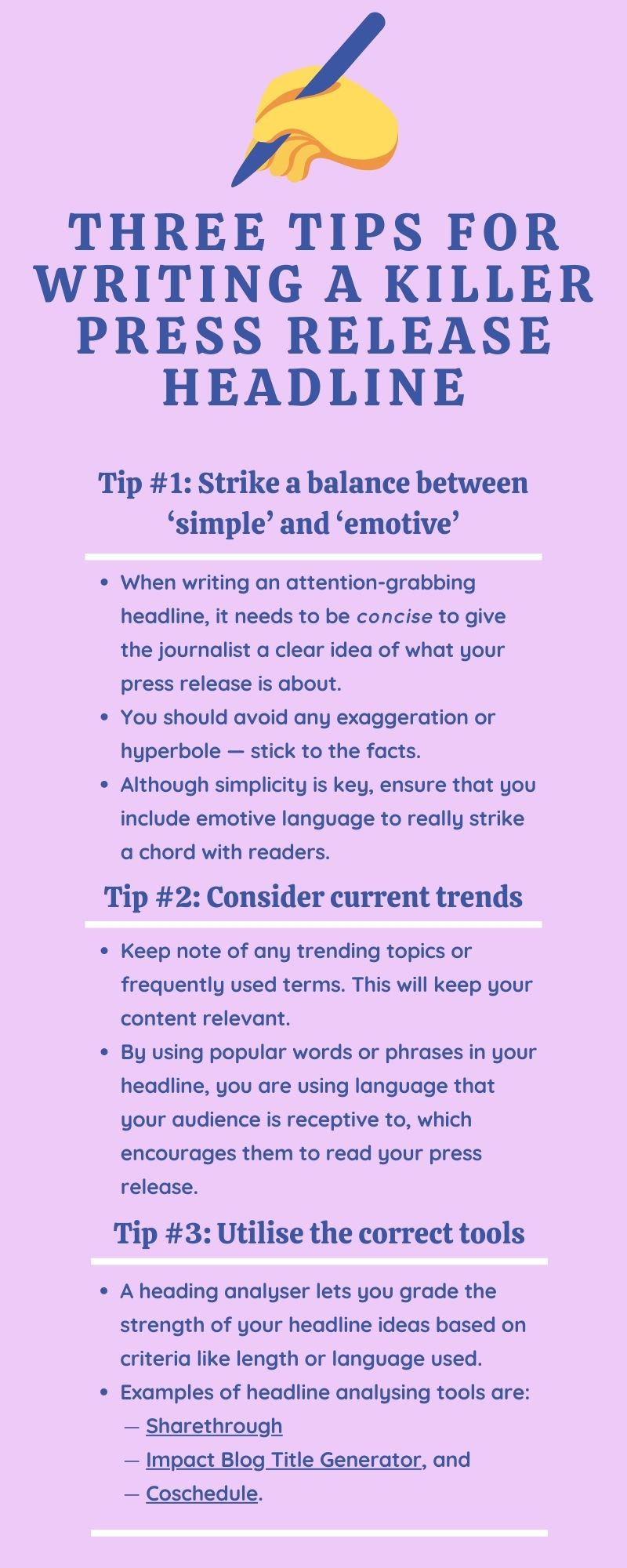10 Tips for Writing Effective Press Releases
Are you interested in writing a press release that will grab attention and effectively communicate your message? Well, you’re in luck because today we’re going to be discussing 10 tips for writing effective press releases. Whether you’re promoting a new product, announcing a company milestone, or sharing exciting news, these tips will help you craft a press release that gets noticed.
In this article, we’ll delve into each tip in detail so that you can gain a deeper understanding of how to implement them in your own press releases. From crafting an attention-grabbing headline to ensuring your content is concise and informative, we’ll cover it all. You’ll also learn about the importance of including quotes, statistics, and contact information to provide credibility and make it easy for journalists to reach out to you. So, stay tuned and get ready to take your press release writing skills to the next level!
Understanding the Purpose of a Press Release
A press release is a written communication that provides information about an event, announcement, or company news to journalists, bloggers, and other media professionals. Its purpose is to grab the attention of the media and generate publicity for the subject of the release.
Press releases play a vital role in public relations strategies as they help companies and organizations communicate their message to a wider audience. They serve as a way to garner media coverage, which can increase brand visibility, generate leads, and build credibility. GGM has more tips.
Identifying the target audience for a press release is crucial. Knowing who you want to reach will help shape the content and tone of your release. Whether it’s industry professionals, customers, or potential investors, understanding the recipient’s interests and needs will allow you to tailor your message effectively.
Crafting a Compelling Headline
The headline of a press release is the first impression you make on readers, so it needs to be attention-grabbing and compelling. It should convey the key message of your release and entice the reader to continue reading.
To create an impactful press release headline, consider the following tips:
-
Be concise: Keep your headline short and to the point. Aim for eight words or fewer to make it punchy and memorable.
-
Use action verbs: Incorporate strong verbs to convey a sense of urgency or excitement. For example, “Launches,” “Unveils,” or “Revolutionizes.”
-
Make it newsworthy: Highlight the most important aspect of your announcement to make it newsworthy and relevant to your target audience. What makes your story compelling?
-
Include keywords: Incorporate relevant keywords in your headline to improve search engine optimization (SEO) and increase the chances of your release being found online.

Writing a Strong and Engaging Introduction
The introduction is a crucial part of a press release. It sets the tone for the rest of the content and should provide a concise summary of the key points.
To create a strong and engaging introduction, consider the following techniques:
-
Hook the reader: Start with a compelling statement, an engaging anecdote, or a thought-provoking question. Grab the reader’s attention from the first sentence.
-
State the news: Clearly state the purpose of your press release and provide a concise summary of the news or announcement. Be straightforward and avoid excessive hype or exaggeration.
-
Provide context: Briefly explain the background or significance of the news to give readers a better understanding of why it matters. This will help engage their interest and encourage them to continue reading.
Structuring the Body of the Press Release
The body of the press release should provide additional details and expand on the key points mentioned in the introduction. It should be organized in a logical and easy-to-follow manner.
To structure the body effectively, follow these guidelines:
-
Start with the most important information: Begin with the most newsworthy details, such as the who, what, when, where, why, and how. Journalists often skim through press releases, so include the essential facts in the first paragraph or two.
-
Include supporting details: Expand on the key points and provide additional context, statistics, and quotes that back up your news. Use bullet points or subheadings to break up information and make it easier to scan.
-
Use quotes strategically: Incorporate quotes from key individuals, such as company executives or subject matter experts, to add credibility and provide different perspectives. Make sure the quotes are relevant and impactful.

Using Clear and Concise Language
Clarity and conciseness are essential when writing a press release. Avoid jargon, technical language, and unnecessary complexity that may confuse or alienate readers.
Consider the following tips to improve clarity and readability:
-
Use plain language: Write in a clear and straightforward manner that is easily understood by a broad audience. Avoid industry-specific terms or acronyms that may be unfamiliar to readers.
-
Keep sentences and paragraphs short: Break up long sentences into shorter ones, and divide long paragraphs into smaller chunks of information. This improves readability and makes the content easier to digest.
-
Avoid excessive adjectives and adverbs: While it’s important to convey a sense of excitement or importance, using too many adjectives and adverbs can dilute the impact of your message. Focus on using strong nouns and verbs instead.
-
Proofread and edit: Eliminate errors, typos, and grammatical mistakes to ensure your press release is polished and professional. Read it aloud or have someone else review it for clarity and coherence.
Including Supporting Facts and Figures
Supporting your press release with data, facts, and figures can enhance its credibility and provide journalists with valuable information to include in their coverage. Numbers and statistics can add depth and context to your story.
When incorporating facts and figures, keep the following in mind:
-
Use credible sources: Ensure the accuracy and reliability of the data you include in your press release. Cite reputable sources to strengthen your claims and provide evidence for your statements.
-
Provide context for statistics: Explain the significance and implications of the numbers you present. Help readers understand why the data is important and how it relates to your overall message.
-
Format numbers for readability: Use bullet points, tables, or charts to present figures in a visually appealing and easy-to-understand format. Breaking down complex data can make it more accessible to readers.

Incorporating Strong Quotes and Testimonials
Quotes are an effective way to add credibility and give a human touch to your press release. Including quotes from key individuals or testimonials from satisfied customers can provide different perspectives and strengthen your message.
To incorporate strong quotes and testimonials effectively, consider the following tips:
-
Choose impactful quotes: Select quotes that provide unique insights, express enthusiasm, or reveal important details. Quotes should add value to the story and enhance the reader’s understanding.
-
Attribute the quotes properly: Clearly identify the individuals being quoted and their relevant roles or expertise. This helps establish their credibility and ensures transparency.
-
Obtain testimonials: Reach out to satisfied customers or clients and ask for their testimonial. Incorporate testimonials that reflect positively on your brand and support your key message.
Adding Relevant Multimedia Elements
In today’s digital age, multimedia elements can significantly enhance the impact of your press release. Including visuals, such as images, infographics, or videos, can make your release more engaging and shareable.
Consider the following tips for incorporating multimedia elements:
-
Include high-quality visuals: Use clear and compelling images or videos that are relevant to your story. Ensure they are of professional quality and properly captioned.
-
Optimize for web: Compress images and optimize multimedia content for fast loading on websites and social media platforms. Large file sizes can affect the user experience and slow down page loading times.
-
Provide alternative text (alt text): When including images, add descriptive alt text to ensure accessibility for visually impaired individuals or those using screen readers. Alt text also helps with SEO.

Optimizing for Search Engines and Social Media
To maximize the visibility and reach of your press release, it is essential to optimize it for search engines and social media platforms. This ensures that your release is easily discoverable and shareable online.
Consider the following tips for SEO and social media optimization:
-
Use relevant keywords: Research and incorporate relevant keywords throughout your press release, including in the headline, subheadings, and body text. This helps search engines understand the content of your release and improves its ranking in search results.
-
Include social media sharing buttons: Make it easy for readers to share your press release on social media platforms by including social sharing buttons or links. This can help amplify your message and increase exposure.
-
Engage on social media: Share your press release across your social media channels and engage with your audience. Respond to comments, answer questions, and encourage discussions to create buzz around your announcement.
Conclusion
Writing an effective press release requires careful planning, attention to detail, and a clear understanding of your target audience. By following these ten tips, you can increase the chances of your press release being noticed by journalists, bloggers, and other media professionals.
Remember to continually improve and adapt your press release writing skills to stay updated with the evolving media landscape. With consistent practice and a focus on delivering valuable and newsworthy content, your press releases will become powerful tools for generating publicity and building brand awareness.


